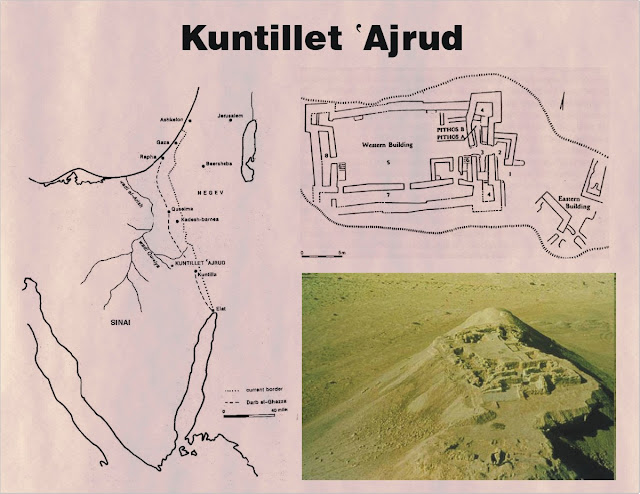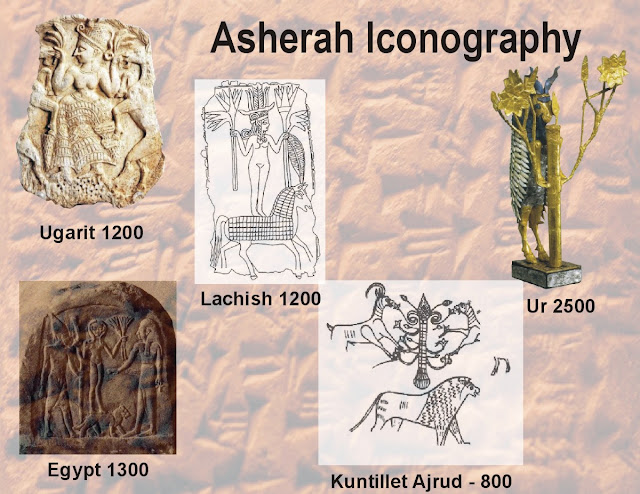Short outline of the presentation
Written sources for the history of ancient Palestine.
The historical axis is diagonal and outlines the main historic epochs.
The lower register attempts to capture (recreate) what used to be called “Biblical history”, while the upper section captures some historical and epigraphic artifacts.
Inaccurate biblical archaisations are responsible for a large number of biblical anachronisms: Texts were written and or edited in the Hellenistic period, they reported Early Iron Age events, and pretended to be old by using Iron Age realities.
The Bible cannot be used as a primary source for our understanding of the history of Palestine or the development of religion in this region. Datable historical artifacts and epigraphic documents should be the main source of any serious study of Palestinian religion.
The Israelites received a distinct, revealed religion. It was revealed first to the patriarchs and then in a comprehensive way to Moses.
There was a completely foreign, fallen, polytheistic, and magical religion of the indigenous population “the Canaanites” in existence.
Some Israelites succumbed to the lure of Canaanite religion. They corrupted and polluted their unique religion thus initiating the Israelite fallen popular religiosity.
Asherah in the West Semitic Pantheon: Biblical texts often couple the Semitic goddess Asherah and the god Baal. Thus, in biblical scholarship Asherah and Baal were considered divine partners until the beginning and occasionally as late as middle of 20th century. With the development of archeology and especially with the discovery and decipherment of the Ugaritic religious texts (discovered in 1920's and dating from 1200 B.C.E.) it became clear this was an obvious misrepresentation. The Goddess Asherah was a partner of the Semitic head of pantheon god El. Baal belonged to very different level of the Canaanite pantheon.
Khirbet El Qom inscription: In the 1960's a series of drawings and inscriptions were found in the tomb located between Hebron and Lachish. Paleography (an art of dating of writings) pointed to the late 8th century. Inscriptions were faint, broken, and difficult to interpret. At the time of discovery this find did not attract much attention.
One inscription was accompanied with a blessing (magical) hand of protection and was accompanied with a written apotropaic (protective) blessing for the entombed. The blessing was made in the name of YHWH and (his) Asherah/Asheratah.
Kuntillet Ajrud discovery: In 1970's another intriguing discovery was made in east Sinai in a place called Kuntillet Ajrud. Several drawings and inscriptions were found in the ruins of what is often described as an ancient caravanserai (a rest house for caravans), dating around late 9th early 8th century BCE. The writings again mentioned YHWH and (his) Asherah. The inscriptions and drawings were on the remnants of two large clay storing jars and on some broken plaster.
Kuntillet Ajrud inscriptions: There is a lengthy scholarly discussion as to whether and how the inscription should be interpreted; that is, together with the drawings or independently. One matter is certain: People (associated with royalty) bearing Israelite “Yahwistic” names are blessing and are being blessed by YHWH and Asherah. In addition, and also interestingly, YHWH is being portrayed not as a universal deity but as localized deity, associated with geographic places and sanctuaries (YHWH of Timna and YHWH of Samaria)
Here are some plain, direct mentions of Asherah in the Bible. One example of her presence was as sacred poles, and one example of her close connection with the god Baal as we talked about it earlier.
Asherah in disguise: Here is another presence of the goddess Asherah in the Bible. This time the goddess is disguised as a personified Wisdom. This translation highlights the original features of a divine partner of creation. This poem represents at least partly creation as cosmogony (divine procreation of the world). I am providing slightly different tanslation (with some explanation) and more discussion of this text in this blog entry "Lady Wisdom")
Biblical divine androgyny: And finally here we have some examples, where the deity (either El or YHWH) is depicted in a clear androgynous role. Some features of androgyny of the head of pantheon, god El, are discernable also in other ANE speculations. It is possible that these archaic features were temporarily highlighted in the process of monotheization of the West Semitic religion.
Short summary:
El and Asherah were the original ruling divine couple of the West Semites.
After the god YHWH was assimilated (theologically merged) with El, he also “inherited” goddess Asherah as a divine consort. For period of time, YHWH and Asherah existed and were worshiped as divine couple. In the process of monotheization of Jewish religion in Persian and especially in Hellenistic period, different techniques were used to eliminate this important goddess: direct negation and deletion from texts; re-labeling of the original practices as heterodox and illegitimate; attempted secularization of the goddess as just a cultic object, or as the personification of Wisdom; and highlighting archaic androgynous aspects of the most senior deity also played some role.












8 comments:
I'm glad to see you're blogging! I seem to recall studying a little about Asherah while we were at Edinburgh. I'm happy you're still interested.
Steve, you are amazing! Few hours after I posted this article about Asherah! Several blogs below I quoted your book and one from our Edinburgh teacher. In blogging I am just a beginner, much less accomplished than you.
Utter bull. Proverbs was written by King Solomon. Ugh. The idiocy never ends. Keep your "slightly different tanslation (with some explanation)" anyone can twist words to make a point.
Dear "K" profanities do not suit you!
I clearly do not share your fundamentalist perspective. But even so, the Book of Proverbs knows and names number of different authors beside Solomon (Prov. 30:1 or 31:1 perhaps 22:17). Isn't it a hint that the Book of Proverbs is actually a collection of sayings from different sources and times?
Authorship of ancient texts is a complex matter and certainly more complicated than "Proverbs was written by King Solomon". And I leave aside the fact that the Ancient Near Easter Scholarship has serious doubts about historicity of Solomon or David.
Awesome blog!!!! This is discussed in length in Margaret Barker's book. YHWH was equated to El during the return of the exile and the subsequent writing of the Torah. However, in the time if the first temple, El Elyon was the God Most Hight, the father. YHWH was his firstborn son, Asheratah (wisdom) being his mother. Each time a High Priest in different regions (temple cults were not restricted to the city of Salem) was annointed, his spirit was reborn, incarnated, by his mother, then he became the visible image of the Lord, YHWH, son of the God Most High.
Didn't God made it clear that there was no one beside him.
Well... Then, why is it said in the Psalm 82:
"God took his stand in the assembly of gods,
he will render judgement among gods."
The biblical tradition contains layers which are strictly monotheistic. But there are also henotheistic passages like the one which I have just quoted and many more like it.
If you long for strict unadulterated monotheism, stop reading the Bible! In such a case Islam would be your best choice.
Thank you for this! Insightful and informative. So much more info has come about since Asherah presented herself to me in a vision 30 odd years ago. Keep up the good work!!
Post a Comment